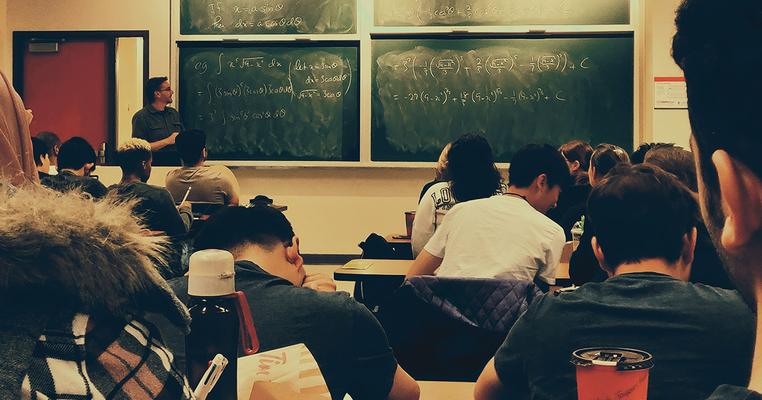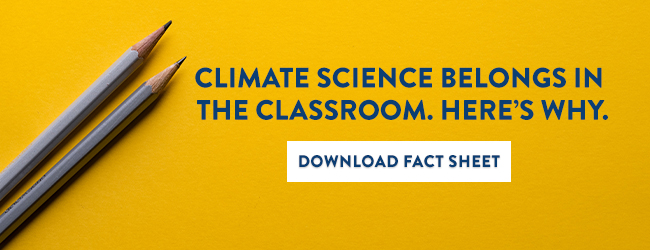
The Opportunity in Climate Science Education: Jobs and More Jobs
In 2019, kids and young people need to not only understand the dangers of the climate crisis so they can be prepared for them, but also build the knowledge and skills necessary to thrive in the future green economy — or risk being left behind. It’s just that simple.
A thorough, rigorous, standards-based climate science education will provide them with the truth about the urgency and harmful effects of climate change, the cognitive skills to not be hoodwinked by the lies and misinformation of climate deniers, and will equip them with the training needed to succeed in the job market of tomorrow — one that will increasingly be made up of clean energy jobs.
According to a new report from E2, the United States added about 110,000 new clean energy jobs in 2018, bringing the total number of Americans who work in clean energy to around 3.26 million.
But by 2030, when many of today’s youth will be entering the job market, this number could be much larger – as many as 24 million new clean energy and low-carbon jobs globally.
Simply put, the clean energy economy is growing, and it demands our attention. Young people need climate science education and training now to help them succeed in tomorrow’s economy. And if we do not provide it, we’re denying them the opportunity for a secure and successful future.
A Clean Energy Economy for All
The transition to a clean energy economy is on, and that means jobs. Lots of them. Good and equitable ones, too.
The Brookings Institution recently tried to map this out a little better. According to Brookings, the clean energy economy, which hasn’t yet matured, will primarily involve 320 unique occupations in three major industrial sectors: clean energy production, energy efficiency, and environmental management.
Until these industries fully take shape, we need to continue to identify and learn about the rising occupations within them to better understand the specific types of workers, activities, and skills needed in the years to come – and to equip future workers with the skills to support long-term career pathways in them.
The bottom line is that jobs are a key feature in the shift toward a cleaner economy and a greener future.
Now, you might be wondering, what do these jobs look like?
Jobs, Jobs, and More Jobs
The clean energy economy is bringing more jobs to the United States, and quickly. This growth isn’t confined to one particular area. Clean energy jobs are being added in every region and state across the country.
Nationwide, about 110,000 new clean energy jobs were created in 2018.
Of those 3.26 million total jobs currently existing in the US clean energy sector, about 2.3 million are in energy efficiency, 508,484 in renewable energy, 138,946 in grid and storage, a little over 250,000 in clean vehicles, and 38,488 in clean fuels.
There are already more clean energy jobs than fossil fuel jobs, outnumbering them by about three-to-one in 2018, and coinciding with renewables generation beating coal for the first time ever.
In fact, the two fastest-growing jobs in the country right now are clean energy jobs. According to the US Bureau of Labor Statistics, employment of solar photovoltaic (PV) installers is projected to grow 104.9 percent from 2016 to 2026. The second-fastest growing occupation is wind turbine technician, with growth expected to be 96.3 percent from 2016 to 2026.
For further context, both of these jobs are expected to grow at more than double the rate of the third fastest-growing occupation in the country, home health aides (47.3 percent projected growth).
And these jobs are popping up all around the country, including places you might not immediately expect.
The Natural Resources Defense Council reports that rural communities have recently seen incredible growth in wind energy, solar power, and energy efficiency. In rural regions throughout the Midwest, specifically, the number of clean energy jobs grew by 6 percent from 2015 to 2016, and totaled nearly 160,000 in 2017. The report also notes that across the 12 Midwestern states, about 2.3 gigawatts (GW) of new renewable capacity was added in rural areas in 2017 — a number that “represents the potential output of about 10 million solar panels or more than 1,000 large wind turbines.”
And another good thing about clean energy jobs? They are lucrative, relative to many other types of employment.
Brookings found that workers in clean energy earn higher and more equitable wages compared to all workers nationally, with mean hourly wages often exceeding national pay averages by 8 to 19 percent.
The educational requirements for these jobs often vary from vocational training to more advanced studies in the sciences, engineering, and more. But all require a core foundational understanding of the problem and the many facets of its solution. Considering this, what exactly should we be emphasizing and promoting to our kids now?
The Knowledge and Training of Tomorrow
If the clean energy economy will involve a large number of new and/or growing occupations spread across multiple industries (clean energy production, energy efficiency, and environmental management), workers will need adequate knowledge, skills, and training to perform them.
How can we prepare today’s youth for these jobs of the future? And how can we ensure that anyone who wants one of these jobs has the opportunity and skills to get it, regardless of their socio-economic circumstances, race, or gender?
The answer is education. Modern and standardized. Formal and fair. Inclusive and fact-based.
All students — from elementary school through high school and college — stand to benefit greatly from learning the truth about our warming planet and also the many possible career pathways into well-paying clean energy jobs open to them.
Take the Next Step
The transition to a clean energy economy is in full swing. And as we continue to move away from fossil fuels toward 100 percent renewable energy, we’ve seen some trends emerge, particularly regarding the jobs that will support the new clean economy.
Not only are great, well-paying jobs being created every day, they’re popping up all around the country, offering renewed promise to many communities that haven’t had access to the kinds of opportunity afforded by livable wages, safe working conditions, and pollution-free environments.
Are you ready to fight for jobs like these in your community?
We all know the Earth is warming at an unprecedented rate because of greenhouse gas emissions from our use of fossil fuels, and it will have dire consequences for all of us, especially for future generations, unless we act now to stop it.
We can’t let powerful interests deprive our children of the knowledge and skills they need to navigate a warming world and help build a better, more sustainable future. Join us and tell your state’s department of education that rigorous, fact-based climate science instruction should be the norm in every K–12 classroom.
Climate change is the greatest challenge of our time and a challenge that will shape the lives of future generations. We should teach young people everything we now know about this crisis – beginning with the fact that it’s manmade, serious, and very solvable.


